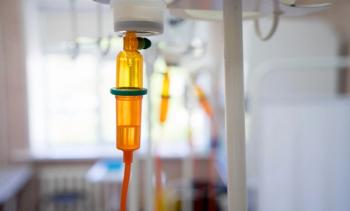
Survival Lower Among Asian Individuals After Out-of-Hospital Cardiac Arrest
Outcomes for these patients following bystander CPR were compared with those among White patients.
Asian individuals who have an
Additional outcomes investigated were survival to discharge and favorable neurological survival, with previous research showing outcome disparities following bystander-initiated CPR—specifically, lower survival rates in predominantly Hispanic and Black communities vs White communities2,3—but there being an ongoing lack of data on these outcomes among Asian individuals.
“Because people of Asian descent constitute the third largest racial group in the United States in 2020 (following White and Black residents), there is a need to understand whether Asian individuals with OHCA have similar rates of bystander CPR and survival as compared with White individuals,” the study authors wrote.
Data for this retrospective cohort analysis were provided by the Cardiac Arrest Registry to Enhance Survival (CARES), which gathers its data on nontraumatic OHCAs for whom resuscitation—by CPR or by defibrillation—is performed from participating sites. Study participants were White (n = 264,143) or Asian (n = 14,835) and predominantly male patients (66.1% and 63.9%, respectively), with the latter being older, at a mean (SD) age of 67.0 (17.6) vs 62.8 (16.9) years.
The top 3 causes of arrest were presumed cardiac (87.8%), respiratory (7.3%), and “other” among the Asian patients and presumed cardiac (83.0%), respiratory (7.3%), and drug overdose (6.6%) among the White patients. For both groups, most OHCAs occurred in the home or residence (83.8% for Asian patients and 83.0% for White patients) and for those that occurred in a public place, a commercial building was the most likely location (> 8.0%). In addition, asystole (complete stoppage of the heart4) and pulseless electrical activity were the top first monitored rhythms, at 54.6% and 51.3%, respectively, and 18.5% and 17.5%.
Overall, Asian individuals were less likely to have a shockable rhythm vs White individuals: 19.2% vs 22.4%.
Models (unadjusted and adjusted for patient age, sex, was the OHCA witnessed, OHCA cause, OHCA location) produced similar results with respect to rates of bystander CPR performed among the Asian and White patient cohorts, respectively: 42.6% vs 42.1% (relative risk [RR], 0.99; 95% CI, 0.97-1.02; P = .69).
The results for survival to discharge differed. There was a 20.0% difference in the survival rates following an OHCA for Asian compared with White individuals, at 8.2% vs 10.3%, which equates to an 8.0% reduced likelihood of surviving to hospital discharge (RR, 0.92; 95% CI, 0.86-0.98; P = .006). In addition, neurological survival was worse among the Asian patient cohort (6.5% vs 8.7%), representing a 15% reduced likelihood of this outcome (RR, 0.85; 95% CI, 0.79-0.91; P < .001) compared with the White patient cohort.
“Collectively, our findings provide important insights into OHCA outcomes for this sizable racial group in the United States,” the study authors wrote, “and the lower rates of overall survival and favorable neurological survival do raise potential concerns about racial disparities.”
Limitations on these findings being extrapolated to a wider patient population include the potential for misclassification of race in CARES, with the authors highlighting that information on race was approximately 70% accurate for their Asian patients but 93% accurate for their White patients; underrepresentation of rural areas in CARES; lack of granularity on Asian race in CARES (eg, East vs Southeast Asian); and not knowing if the lower survival rates for the Asian patients were due to unmeasured comorbidities or power-quality resuscitation and postresuscitation care.
“Since Asian individuals had similar rates of bystander CPR as White individuals, we didn’t expect them to have lower survival rates,” said senior study author Paul Chan, MD, professor of medicine at Saint Luke’s Mid America Heart Institute and the University of Missouri-Kansas City,
To move forward, the study investigators note the importance of studying survival rates in these 2 patient groups “to determine whether there are disparities in resuscitation care between Asian and White individuals with OHCA.”
Reference
1. Gupta K, Raj R, Asaki SY, Kennedy K, Chan PS. Comparison of out‐of‐hospital cardiac arrest outcomes between Asian and White Individuals in the United States. J Am Heart Assoc. Published online July 26, 2023. doi:10.1161/JAHA.123.030087
2. Blewer AL, Schmicker RH, Morrison LJ, et al. Variation in bystander cardiopulmonary resuscitation delivery and subsequent survival from out-of-hospital cardiac arrest based on neighborhoodlevel ethnic characteristics. Circulation. 2020;141(1):34-41. doi:10.1161/CIRCULATIONAHA.119.041541
3. Chan PS, McNally B, Vellano K, Tang Y, Spertus JA. Association of neighborhood race and income with survival after out-of-hospital cardiac arrest. J Am Heart Assoc. 2020;9(4):e014178. doi:10.1161/JAHA.119.014178
4. Asystole. Cleveland Clinic. Updated May 3, 2022. Access August 7, 2023.
5. Asian adults in U.S. less likely to survive cardiac arrest despite bystander CPR equal to white adults. News release. American Heart Association. July 26, 2023. Accessed August 7, 2023.
Newsletter
Stay ahead of policy, cost, and value—subscribe to AJMC for expert insights at the intersection of clinical care and health economics.









































